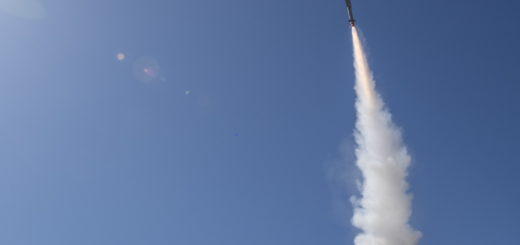Turkish F-16 Fighter Jets Gain Realtime Threat Detection with Locally-Made EDPOD Electronic Warfare Pod

{loadposition bannertop}
{loadposition sidebarpub}
According to information published by the Turkish Industry and Technology Minister Mehmet Fatih Kacır via his official X account on June 22, 2025, the Electronic Support Pod (EDPOD), a domestically developed electronic warfare system created by TÜBİTAK BİLGEM, has officially entered the inventory of the Turkish Air Force following successful flight tests against live radar systems. The EDPOD is now integrated into Türkiye’s F-16 fighter jets, significantly enhancing the nation’s aerial electronic warfare capabilities and marking a major stride toward technological independence in the defense sector.Follow Army Recognition on Google News at this link
Turkish Air Force F-16 fighter jet on the ground fitted with the locally developed EDPOD electronic warfare pod, highlighting Türkiye’s progress in domestic defense technology and pilot threat awareness systems. (Picture source: Abd X account)
Developed entirely using national resources, the EDPOD underscores Türkiye’s determination to reduce reliance on foreign defense technology and to expand the autonomy and depth of its military-industrial base. Its induction into service is a testament to the maturity of Türkiye’s defense R&D ecosystem and the growing sophistication of its electronic warfare doctrine. The system’s capability to detect, analyze, and geolocate a wide spectrum of enemy radar emissions—including those used for surveillance, targeting, and missile guidance—provides Turkish pilots with a critical edge in contested airspace.
For pilots operating the F-16, the EDPOD functions as a real-time threat intelligence suite. It supports both wideband and narrowband detection channels, enabling the identification of multiple radar signals concurrently across a broad frequency range. This allows the system to immediately recognize and categorize hostile emitters, offering situational awareness far beyond line-of-sight. It can generate threat libraries on the fly, log and archive raw signal data for mission debriefs, and assist in pinpointing radar locations with high precision.
Moreover, EDPOD’s integration with the Link-16 data link enhances its operational value by enabling seamless sharing of electronic warfare data with allied aircraft and ground stations. This interconnectedness allows for coordinated threat responses, joint mission planning, and real-time adaptation to dynamic threat environments. It is a key enabler in building a network-centric warfare capability for the Turkish Armed Forces.
The successful deployment of EDPOD represents not only a tactical advancement but also a strategic leap in indigenous defense manufacturing. As Türkiye continues to invest in and expand its homegrown defense infrastructure, systems like EDPOD play a crucial role in ensuring technological sovereignty, reducing import dependency, and reinforcing its role as a regional power with modern and self-sufficient military capabilities.

{loadposition bannertop}
{loadposition sidebarpub}
According to information published by the Turkish Industry and Technology Minister Mehmet Fatih Kacır via his official X account on June 22, 2025, the Electronic Support Pod (EDPOD), a domestically developed electronic warfare system created by TÜBİTAK BİLGEM, has officially entered the inventory of the Turkish Air Force following successful flight tests against live radar systems. The EDPOD is now integrated into Türkiye’s F-16 fighter jets, significantly enhancing the nation’s aerial electronic warfare capabilities and marking a major stride toward technological independence in the defense sector.
Follow Army Recognition on Google News at this link
Turkish Air Force F-16 fighter jet on the ground fitted with the locally developed EDPOD electronic warfare pod, highlighting Türkiye’s progress in domestic defense technology and pilot threat awareness systems. (Picture source: Abd X account)
Developed entirely using national resources, the EDPOD underscores Türkiye’s determination to reduce reliance on foreign defense technology and to expand the autonomy and depth of its military-industrial base. Its induction into service is a testament to the maturity of Türkiye’s defense R&D ecosystem and the growing sophistication of its electronic warfare doctrine. The system’s capability to detect, analyze, and geolocate a wide spectrum of enemy radar emissions—including those used for surveillance, targeting, and missile guidance—provides Turkish pilots with a critical edge in contested airspace.
For pilots operating the F-16, the EDPOD functions as a real-time threat intelligence suite. It supports both wideband and narrowband detection channels, enabling the identification of multiple radar signals concurrently across a broad frequency range. This allows the system to immediately recognize and categorize hostile emitters, offering situational awareness far beyond line-of-sight. It can generate threat libraries on the fly, log and archive raw signal data for mission debriefs, and assist in pinpointing radar locations with high precision.
Moreover, EDPOD’s integration with the Link-16 data link enhances its operational value by enabling seamless sharing of electronic warfare data with allied aircraft and ground stations. This interconnectedness allows for coordinated threat responses, joint mission planning, and real-time adaptation to dynamic threat environments. It is a key enabler in building a network-centric warfare capability for the Turkish Armed Forces.
The successful deployment of EDPOD represents not only a tactical advancement but also a strategic leap in indigenous defense manufacturing. As Türkiye continues to invest in and expand its homegrown defense infrastructure, systems like EDPOD play a crucial role in ensuring technological sovereignty, reducing import dependency, and reinforcing its role as a regional power with modern and self-sufficient military capabilities.





